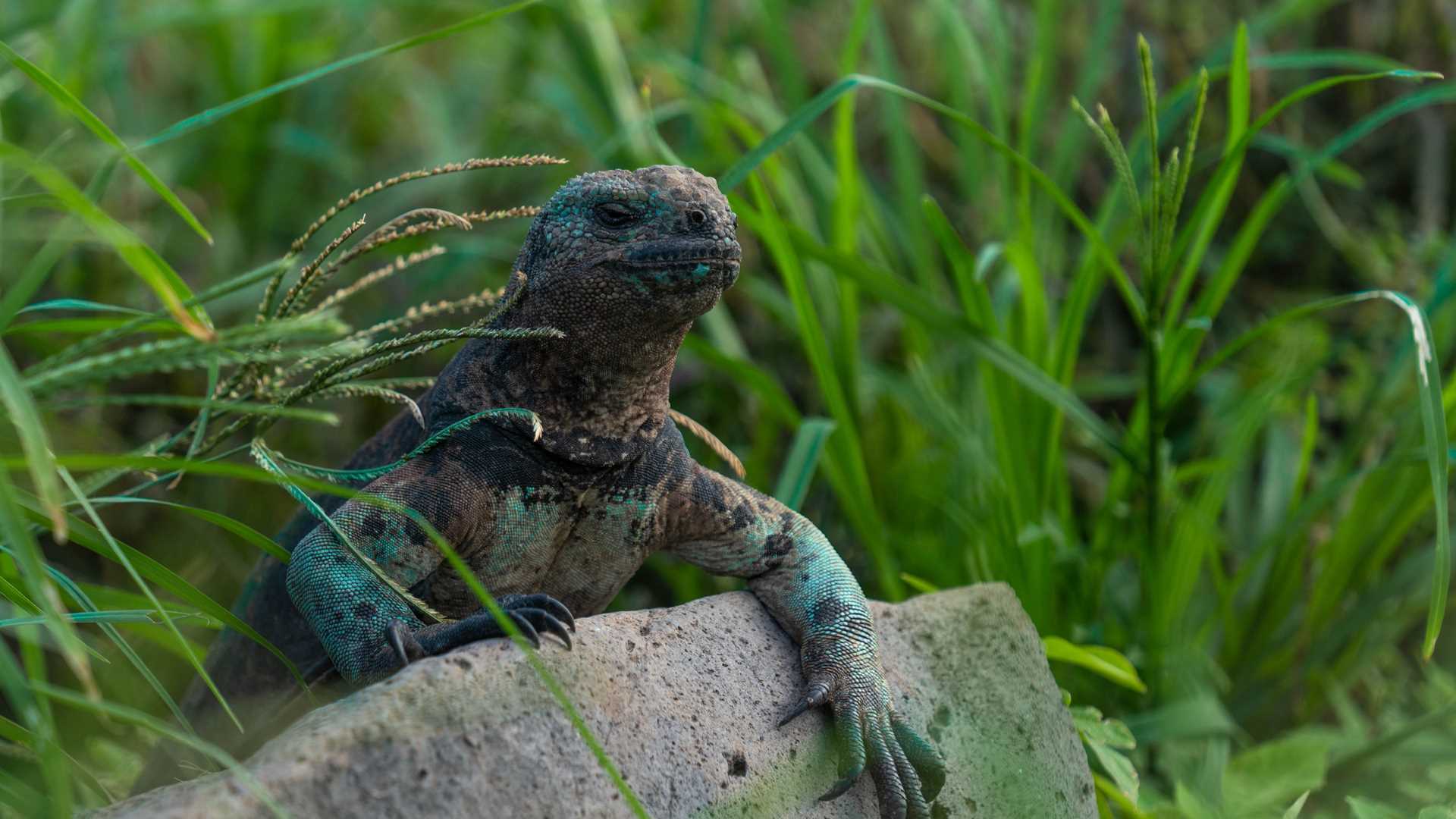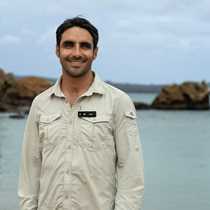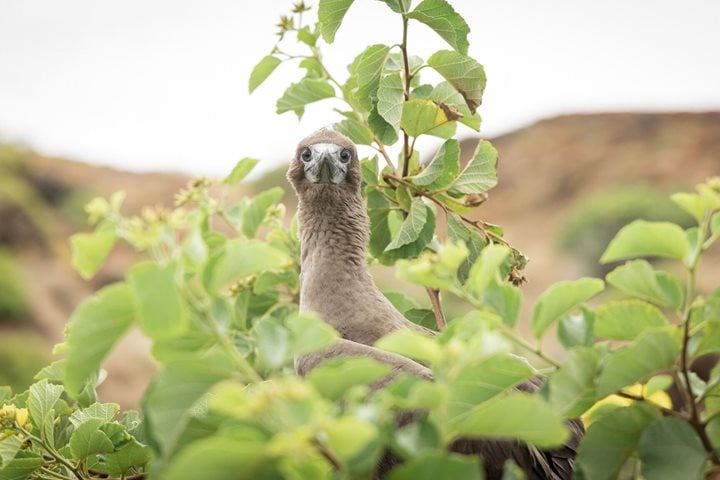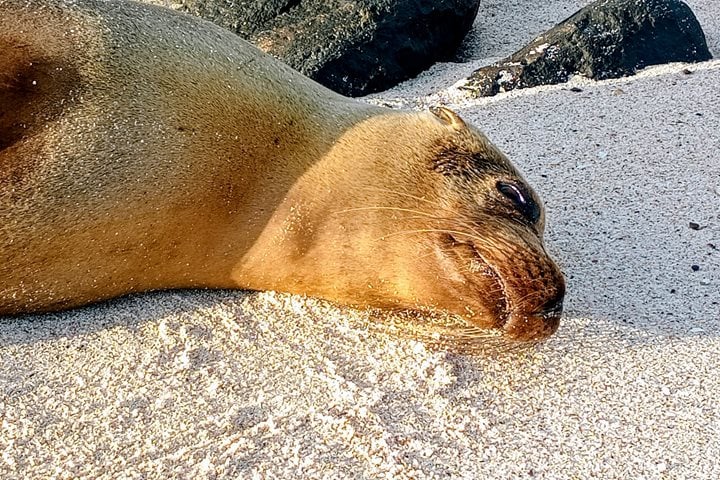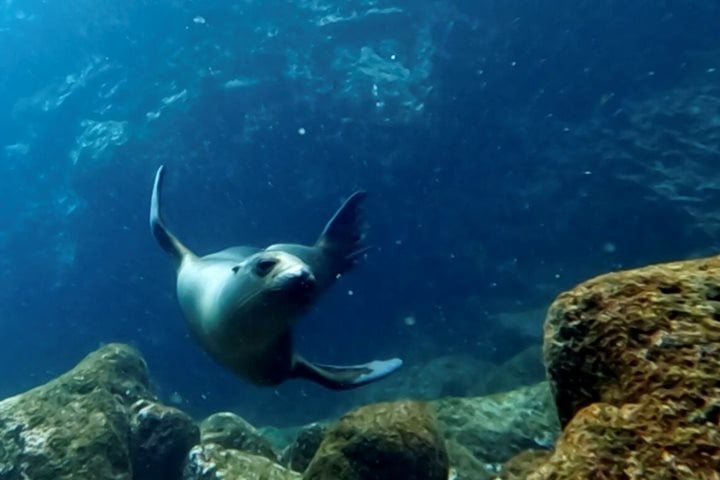This morning, National Geographic Islander II anchored on the oldest island of the archipelago. Espanola is a fairly small island, but it is very rich in diversity and stunning landscapes.
In the morning, our guests had the opportunity to explore a white sand beach filled with playful and curious sea lions and seabirds. It was the perfect chance to relax on the beach and swim in the clear turquoise waters of Gardner Bay.
In the afternoon, we disembarked at Punta Suarez. From our first steps on the island, guests had countless encounters with marine iguanas, sea lions, and Sally Lightfoot crabs. After walking along the rocky trails, they explored terrains full of life. Waved albatrosses rested on the ground and flew overhead, and colorful marine iguanas posed. We observed large groups of Nazca boobies and various other animals. Today was an unforgettable experience.

